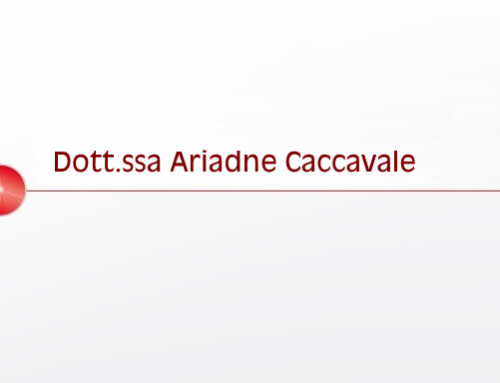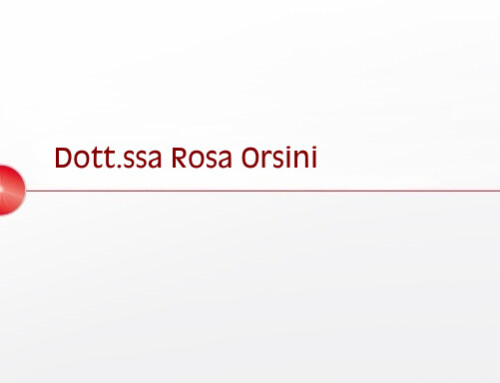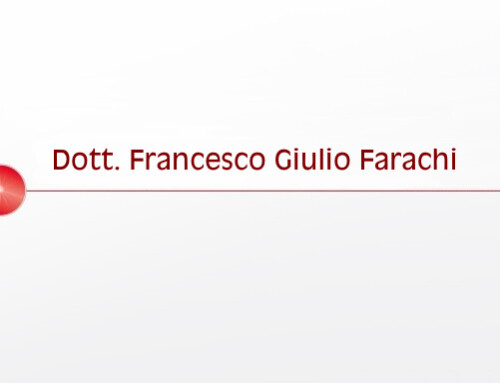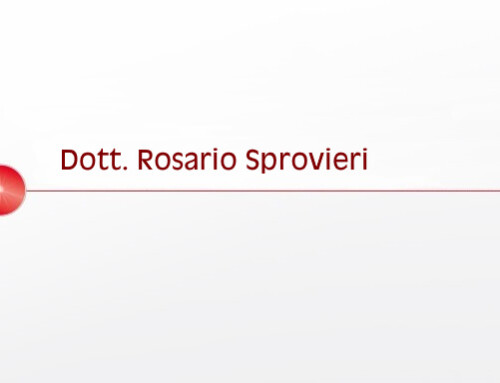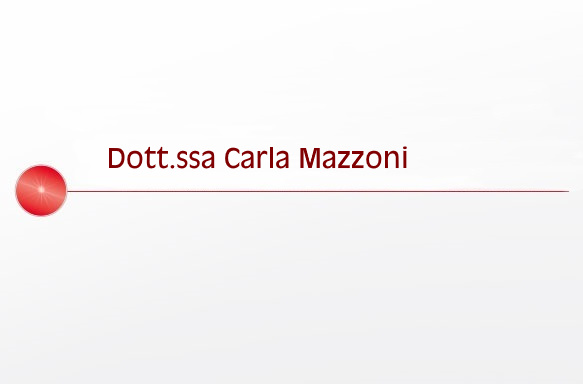
![]()
2016
DIVINO E MATERIALE di Carla Mazzoni
“ Le besoin d’art est pour l’homme un besoin tout à fait primordial, autant et plus peut- etre que le besoin du pain “ ( Jean Dubuffet)
Scegliere di percorrere la Via della creatività è una scelta che scaturisce da una necessità autentica che appare naturalmente nella vita di un artista. E’ dalla necessità interiore che scaturisce l’atto creativo, senza predeterminazione, sospinto a manifestarsi da quel crogiuolo di sensazioni accumulatesi silenziosamente nell’ inconscio dell’ artista, unite a quella misteriosa spinta creativa che caratterizza la nascita di un’ opera d’ arte.
Se è vero, ed è vero, che l’arte rende visibile e materiale l’ immaginazione dell’ artista, osservando alcune opere di Alessandra Casciotti scopriamo un fantastico mondo interiore. Attraverso la rappresentazione di simboli, metafore, miti, l’artista ci lascia intuire una sua complessa realtà, arricchita da continui stimoli esterni, letture e studi.
Alessandra Casciotti utilizza molto spesso immagini simboliche che le permettono con pochi mezzi significanti di comunicare più significati, di evocare e riunire in modo analogicamente polivalente una molteplicità di sensi, “ un più di senso “ come scrive Ernst Kassirer nelle sue riflessioni sul concetto della “ funzione simbolica “. Non a caso il linguaggio simbolico è il linguaggio iniziatico per eccellenza.
Tra le Opere di Alessandra Casciotti prendiamo in esame ad esempio l’ opera “ Giano Bifronte “. Non possiamo non considerare i molteplici risvolti che quest’ immagine, costruita e dipinta con estrema precisione, evoca. La testa di Giano è chiusa in un cerchio ed il cerchio è inserito in un quadrato. In tutte le culture e in tutti i tempi il cerchio, linea geometrica senza principio né fine, rappresenta l’ eternità, il cielo, Dio, la spiritualità, mentre il quadrato rappresenta la terra, l’ uomo, la materialità. Quindi in questo quadro il cerchio giallo oro all’ interno del quadrato possiamo leggerlo come la scintilla divina nell’ involucro della materia. L’ artista ha dipinto con due colori fortemente contrastanti queste due forme geometriche, il quadrato ed il cerchio, forse per accentuare la differenza tra materiale e divino, ma forse anche perché proprio questi erano i due colori che in quel momento il suo istinto d’artista suggeriva al pennello.
Kandinsky ci dice che l’artista è la mano che, attraverso il colore e la forma, tocca i tasti dell’ anima secondo il dettato della sua necessità interiore. Il “ Giano Bifronte “, dipinto con maestria e sottile liricità da Alessandra Casciotti, evoca molto lavoro da compiere su noi stessi per liberare dalla nigredo il seme dell’ Oro che è già nella nostra interiorità.
Nel dipinto della nostra artista, la testa di Giano, inserita in una campitura di sottilissima velatura verde, sembra ergersi nell’aria. L’ antico dio italico Janus, dal doppio volto, guardiano nell’ antica Roma delle soglie e delle Porte Solstiziali, con la sua bifrontalità presiedeva alla conoscenza del passato e dell’ avvenire. Oggi i due San Giovanni, il Battista e l’ Evangelista, i cui nomi hanno la stessa radice etimologica del Giano bifronte, vengono festeggiati anch’essi nei due solstizi. Al 24 giugno, Porta solstiziale dell’ estate (Janua Inferni ), è legato Giovanni Battista. E’ la porta che indica e segna l’ inizio del viaggio. Al Solstizio d’ inverno, il 21 dicembre ( festa dei Saturnali per i Romani ), si festeggia l’ Evangelista ed è il giorno più corto dell’ anno, ma da quel giorno la luce comincia impercettibilmente ad aumentare; inizia la fase – gli ermetisti la chiamano di trasmutazione dal nero al bianco – che segna per ognuno di noi il cambiamento di attenzione dai problemi materiali allo spirituale : l’ inconscio individuale chiuso in sé si schiude come il seme che sta per dar vita ad una nuova pianta. Inizia la fase che equivale simbolicamente ad una Rinascita e che avrà il suo culmine di completa purificazione dell’inconscio il 2 febbraio alla Candelora.
Anche nell’ opera “ Opportunità “ l’ artista ci pone di fronte ad un tema d’ impegno di scelte – che ognuno di noi dovrà compiere nella vita – scelte dalle quali scaturiranno opportunità di Felicità, Successo, Passione, Amore, Amicizia, Fortuna, Prestigio, Benessere. Il titolo è emblematico. Le Opportunità sono appunto quelle che ci si offrono a seconda delle scelte effettuate. La scrittrice Simone De Beauvoir, riflettendo sulla condizione della donna, parlava di due possibilità : scegliere di vivere nell’ in sé, ossia nell’ immanenza, limitando la propria libertà, o viceversa di vivere nel per sé, operando per trasformare le dinamiche del mondo in cui viviamo, proiettati verso un futuro aperto senza confini.
Considerando allora i dipinti di Alessandra Casciotti e il senso dei loro contenuti diremmo che la nostra artista ha già fatto la sua scelta di vivere nel per sé. Non lasciamoci trarre in inganno dalle immagini rappresentate che appaiono di lettura semplice, quasi illustrative. Al contrario sono figurazioni costruite ed assemblate con estrema cura, grande pulizia delle forme, perizia nella scelta e nella stesura dei colori. Inoltre vi è in queste opere l’acuta ricerca di un messaggio complesso da porgere con misura, perchè la vera lettura dovrà essere compresa solo da chi abbia già acquisito gli strumenti per comprendere.
L’ opera “ Opportunità “ ci appare come una composizione di figure geometriche concentriche. Realizzata con estrema sintesi e nitidezza è caratterizzata da forte simbolismo. Il quadro ha forma ottagonale, chiuso in una cornice nera che ne mette in risalto il formato. Il passe par tout di colore scuro, ottagonale, incornicia un cerchio, giallo oro, all’ interno del quale sono elencate otto possibilità. Ai nostri occhi, dunque, appare ancora una Cosmologia nella quale anche la scelta del passe par tout sembra avere un ruolo importante : il suo colore scuro simbolo della Terra e la sua forma ottagonale simbolo dell’ Uomo, laddove il Cielo viene simboleggiato dal cerchio dipinto di giallo. L’ Uomo ponte tra Cielo e Terra.
La figura geometrica ottagonale è come una figura di mezzo tra il quadrato ed il cerchio, ossia ha funzione di mediazione tra la Terra e il Cielo, e simbolicamente rappresenta la Resurrezione. Il Vescovo di Milano Ambrogio istituì che la forma delle Fonti Battesimali e dei Battisteri fosse ottagonale proprio per sottolineare nella cerimonia del Battesimo l’ unione tra Dio e l’ Uomo. Nel famoso Castel del Monte di Federico II del XIII sec. la simbologia dell’ otto abbonda : ottagonale la pianta, otto le torri, otto le stanze trapezoidali. Anche nell’ Opera “ Opportunità “ abbiamo otto spazi trapezoidali e in ognuno di essi vi è dipinta una Chiave : otto chiavi dotate di un simbolo corrispondente alle Opportunità che l’artista ha voluto indicare nel cerchio del cielo. Il numero otto, qui inteso simbolicamente come concetto di causa – effetto, ci indica che ciascuno di noi raccoglie esattamente ciò che ha seminato. Non ci soffermeremo oltre sul simbolismo ermetico delle chiavi perché il discorso ci porterebbe davvero lontano, basterà ricordare che la Chiave è lo strumento per accedere a qualcosa che non si conosce, ma che si può raggiungere cercando e trovando (invenies) la giusta Chiave per aprire le innumerevoli Porte che si presentano, da aprire o da chiudere, e che ci sfidano a superarle.
Infine, al centro del quadro, in uno spazio di nuovo ottagonale dipinto di bianco, il Bene, troviamo la toppa di una serratura sormontata da un minuscolo cerchio : la presenza del divino.
Infine voglio soffermarmi sull’ ultimo quadro, in ordine di tempo, dipinto da Alessandra Casciotti. “Le Metamorfosi “ è un’ opera di maggior respiro rispetto alle precedenti, non solo per la sua dimensione, ma soprattutto per la maggiore libertà a cui l’artista sembra abbandonarsi. Non più figure geometriche a costringere forma e messaggio ma un ampio spazio vuoto nel quale si erge una pianta dalle grandi foglie di un verde splendente. La pianta ospita in sequenza un bruco e una crisalide pronta a schiudersi. Più a destra l’artista ha dipinto una bellissima, coloratissima e perfettamente simmetrica farfalla che ha già iniziato il suo volo. La metamorfosi da bruco a farfalla rende evidente il messaggio dell’ avvenuto percorso iniziatico di purificazione. Ma vi è anche, più sottile, il simbolismo della pianta che con le sue radici e i suoi rami – ancora una volta uno dei pensieri cardine della Casciotti – mette in comunicazione Terra e Cielo. In alto nello spazio del quadro abbiamo una maschera che guarda, e vede, con i suoi occhi ciechi la trasformazione avvenuta. Simbolicamente la maschera ( mask, larva ) rappresenta il passaggio dal mondo terreno ad un mondo oltre. Per gli antichi la larva rappresentava simbolicamente il primo stadio dell’ anima che strisciando dalla terra doveva salire sull’ albero, tramite del rapporto Terra – Cielo, per trasformarsi in farfalla perfetta, simmetrica purificata.
Alla fine del nostro breve exscursus tra le Opere di Alessandra Casciotti, mi chiedo se sapremo raccogliere tutte le eco che queste ci rimandano e accoglierne il silenzioso suggerimento a lavorare ognuno di noi intensamente per completare il nostro viaggio nell’ interiorità e trovare quella piccola chiave che ci aprirà la porta giusta.
Ora, il mio pensiero va con un sorriso al ricordo della piccola Alice di Lewis Carrol che aveva trovato la chiave d’oro della porticina nascosta.
Carla Mazzoni
31 marzo 2016
![]()
2016
DIVINE AND MATERIAL by Carla Mazzoni
“ Le besoin d’art est pour l’homme un besoin tout à fait primordial, autant et plus peut- etre que le besoin du pain “ ( Jean Dubuffet)
Choosing to follow the Path of creativity is a choice that originates from an authentic need that appears naturally in the life of an artist. It is from an inner necessity that the creative act originates, without predetermination, instigated to manifest itself from a melting pot of sensations that have accumulated silently in the subconscious of the artist, together with that mysterious creative push that characterizes the birth of an art piece.
If it is true, and it is, that art makes visible and real the imagination of the artist, observing some of Alessandra Casciotti’s art pieces we discover a wonderful interior world. Through the representation of symbols, metaphors, myths, the artist allows us to perceive her complex reality, enriched by continuous external stimuli, readings and studies.
Alessandra Casciotti utilizes very often symbolic images that allow her with few significant instruments to communicate more than one meaning, of evoking and reuniting in a polyvalent, analogical way a multiplicity of senses, “a more than sense” as Ernst Kassirer writes in his reflections on the concept of the “symbolic function”. It is not a case that the symbolic language is the initiated language by default.
Of the works of art of Alessandra Casciotti we take in exam as an example the painting “ Giano Bifronte”.
We can’t miss to consider the different aspects that this image, crafted and painted with extreme precision, evokes.
The head of Giano is enclosed in a circle and the circle is inserted in a square. In all cultures and in all times the circle, geometrical line without a beginning or an end, represents eternity, the sky, god, spirituality, while the square represents earth, man, materiality. Thus in this view the golden yellow circle inside of the square can be seen as the divine spark in the matter’s shell. The artist painted with two highly contrasting colours these two geometrical shapes, the square and the circle, maybe to accentuate the difference between the divine and the material, but maybe also because these were the two colours that in that moment her artist’s instinct suggested to the paintbrush.
Kandinsky tells us that the artist is the hand that, through colour and shape, touches the chords of the soul based on the inner feeling. “Giano Bifronte”, painted with virtuosity and underlying lyricism by Alessandra Casciotti, evokes the great work to perform on ourselves to free from nigredo the seed of Gold that is already in our interiority.
In the painting by our artist, the head of Giano, inserted in a campitura of veiled green, seems to levitate in air. The ancient italic god Janus, two faced, guardian in ancient Rome of doorways and of the Solstice Doors, with his bi-frontality presided the knowledge of past and future. Today the two Saint Johns, the Baptist and the Evangelist, names of which have the same etymological root of the Giano Bifronte, are celebrated as well in the two solstices. John the Baptist is linked to the 24th of June, summer’s solstice (Juana Inferni). It is the door that indicated the beginning of the journey. The Evangelist is celebrated on the winter Solstice, 21st of December (the roman Saturnali festivity), and it is the shortest day of the year, but from that day on light starts to slightly increase; the phase begins – which the hermetist call the transmutation from black to white – that identifies in all of us the shift in attention from material problems to spiritual ones: the individual subconscious closed in itself opens up like a seed that is about to give life to a new plant. The phase starts that symbolically equals a Rebirth and that will have its peak of complete purification of the subconscious the 2nd of February, on the Candelora.
Also in the work of art “Opportunity” the artist puts us in front of a theme of engaging choices – that all of us will have to make in our lifetime – choices from which opportunities of Happiness will be born, Success, Passion, Love, Friendship, Prestige, Wellbeing. The title is emblematic. The opportunities are those which present themselves based on the choices that are made. The writer Simone De Beauvoir, reflecting on the condition of women, talked about two possibilities: choose to live in the in sé¸ otherwise known as immanence, limiting liberty, or on the other hand to live in the per sé, operating to transform the dynamics of the world in which we live, projected towards an open future without borders.
Considering thus Alessandra Casciotti’s paintings and the meaning of their content we could say that our artist has already made the choice to live in the per sé. We shall not be fooled by the represented images that appear easy to read, almost illustrative. On the contrary they are crafted figures assembled with extreme care, figures which are clean-cut, in the knowledge of choosing and distributing colour. There is in these works of art a research of a complex message to be distributed with care, because the true reading will be understood only by who already has the means to understand.
The piece of art “Opportunitá” appears as a composition of concentric geometrical figures. Realized with extreme synthesis and clarity it is characterized by a strong symbolism. The painting has an octagonal shape, enclosed in a black frame that enhances its shape. The passepartout which is of a dark colour, octagonal, encases a circle, golden yellow, in which eight possibilities are listed. To our eyes, a Cosmology appears in which the choice of the passepartout is important: its dark colour symbol of the Earth and its octagonal shape symbol of mankind, where the sky is symbolized by the circle painted in yellow. Man indicating a bridge between the sky and earth.
The octagonal geometrical shape is like a shape that his half square and half circle, to mediate between the earth and sky, and to symbolize the Resurrection. The Archbishop of Milan, Ambrogio, wanted the baptismal springs and baptisteries to be of an octagonal shape to underline in the ceremony of baptism the union of God and Man. In the famous Castel del Monte di Federico II dated XIII century, the symbol of number eight prevails: octagonal is the base, eight the towers, eight the trapezoid rooms. Also in the painting “Opportunitá” we have eight trapezoid spaces and in each one of them there is a key: eight keys representing a corresponding symbol to the Opportunity that the artist wanted to indicate in the circle of the sky.
The number eight, here symbolically represented as a concept of cause and effect, indicated that all of us reap what we sow. We will not further explore the hermetic symbolism of the keys because the issue would take us on a long path, it is sufficient to remember that the Key is the instrument to access something that is not known, but that can be reached seeking and finding (invenies) the right Key to open the endless Doors that present themselves, to be opened or closed, and that challenge us to overcome them.
Finally, in the centre of the square, in a space that is again octagonal and painted in white to indicate the Good, we find a keyhole covered by a small circle: the presence of the divine.
I would like to now briefly linger on the last painting, from a chronological point of view, painted by Alessandra Casciotti. “Le Metamorfosi” is a work of art more far reaching compared to the previous ones, not only for it size, but mostly for the liberty that the artist seems to gain. We don’t find any more geometrical figures that constrict shapes and messages but a wide empty space in which a brilliant green big leafed plant stands out. The plant is home to in sequence, a caterpillar and a chrysalis ready to hatch. Further to the right the artist painted a beautiful, colourful and perfectly symmetrical butterfly that already started flying. The metamorphosis from caterpillar to butterfly explains the message of the purifying path which begun. There is also, more subtle, the symbolism of the plant that with its roots and branches – once more one of the main concepts of Casciotti – connects Earth and Sky. In the top part of the painting we can see a mask that looks on, and sees, with its blind eyes the transformation that took place.
Symbolically the mask (larva) resents the passage from an earth-bound world to another world. In the ancient times the larva represented symbolically the first stage of the soul that crawling on the earth was supposed to climb the tree, through the Earth-Sky connection, to transform itself in a perfect, symmetrical, purified butterfly.
In the end of our short excursus in Alessandra Casciotti’ s works, I ask myself if we will be able to collect all the echoes that they send us and accept the silent suggestion to work, each one of us, intensely to complete our journey in the inner-self and find that small key that will open the right door.
Now, my thoughts go with a smile to the memory of little Alice by Lewis Carrol that had found the golden key to the hidden door.
Carla Mazzoni
31 March 2016

